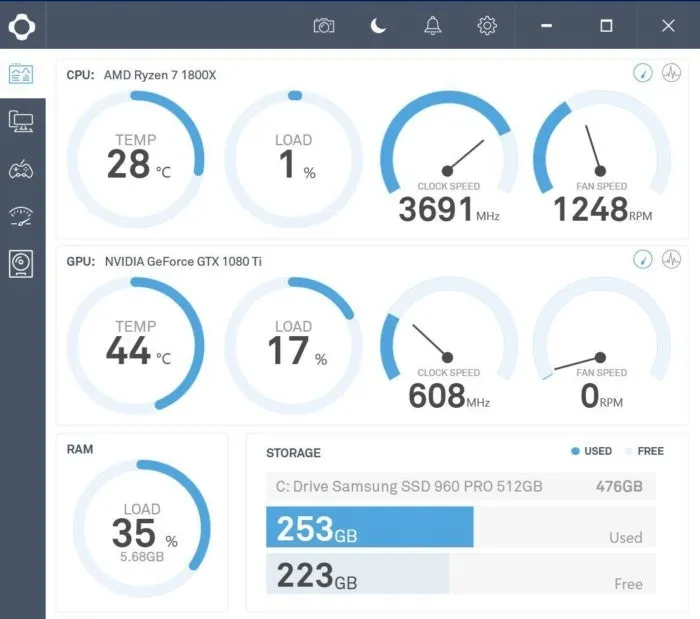Title: The Ultimate Guide to Monitoring Laptop Temperature
Introduction:
Laptops have become indispensable tools in our daily lives, serving as workstations, entertainment hubs, and communication devices. However, prolonged use or demanding tasks can lead to overheating, potentially causing performance issues and hardware damage. Monitoring your laptop’s temperature is crucial to maintaining its health and longevity. In this comprehensive guide, we’ll explore the importance of monitoring laptop temperature, methods to do so effectively, and practical tips to keep your device running smoothly.
Why Monitor Laptop Temperature?
Understanding the significance of monitoring laptop temperature is the first step toward maintaining optimal performance and preventing hardware damage. Here’s why it matters:
Related Post: How To Take Screenshots On Acer Laptop
- Prevents overheating: Continuous high temperatures can lead to thermal throttling, slowing down your laptop’s performance.
- Protects hardware components: Excessive heat can damage critical components like the CPU, GPU, and motherboard.
- Extends lifespan: Regular temperature monitoring helps identify potential issues early, preserving your laptop’s longevity.
- Ensures stability: By keeping temperatures within safe limits, you can maintain system stability even during intensive tasks like gaming or video editing.
Methods for Monitoring Laptop Temperature:
Several methods are available to monitor your laptop’s temperature, ranging from built-in utilities to third-party software solutions:
-
Built-in Monitoring Tools: Many laptops come equipped with built-in temperature monitoring tools accessible through BIOS or manufacturer-specific software.
Recommended: What Are The 10 Advantages Of Laptop
-
Third-Party Software: Utilizing third-party applications such as HWMonitor, Core Temp, or SpeedFan provides detailed insights into various temperature metrics.
-
Laptop Cooling Pads: Investing in a quality cooling pad can help dissipate heat more efficiently, reducing overall temperature levels.
Check Out: How To Reformat Laptop Windows 10
-
Hardware Monitoring Devices: External temperature monitoring devices, like thermal probes, offer real-time temperature readings and can be particularly useful for intensive tasks or overclocking.
Best Practices for Temperature Management:
Implementing effective temperature management practices can significantly enhance your laptop’s performance and longevity:
- Ensure Proper Ventilation: Keep air vents clear of obstructions to facilitate optimal airflow.
- Elevate Your Laptop: Using a laptop stand or raised surface can improve airflow underneath the device.
- Regular Cleaning: Dust accumulation can impede airflow and lead to higher temperatures. Clean your laptop’s vents and internal components regularly.
- Avoid Overclocking: While tempting for performance enthusiasts, overclocking can significantly increase temperatures and stress hardware components.
- Monitor Ambient Temperature: Be mindful of the environment in which you use your laptop, as high ambient temperatures can exacerbate internal heat buildup.
FAQs (Frequently Asked Questions):
- Q: What is the ideal temperature range for a laptop?
- A: Ideally, laptops should operate within a temperature range of 40-60 degrees Celsius under normal load conditions.
- Q: How often should I check my laptop’s temperature?
- A: It’s advisable to check your laptop’s temperature periodically, especially during demanding tasks or prolonged usage periods.
- Q: Can high temperatures damage my laptop’s battery?
- A: Yes, prolonged exposure to high temperatures can degrade battery health and reduce its lifespan.
- Q: Is thermal throttling reversible?
- A: Yes, thermal throttling is a protective mechanism that reduces performance to prevent overheating. Once temperatures decrease, performance typically returns to normal.
In conclusion, monitoring your laptop’s temperature is essential for maintaining performance, preventing hardware damage, and prolonging its lifespan. By adopting proactive temperature management practices and utilizing appropriate monitoring tools, you can ensure your laptop operates optimally under various conditions. Stay vigilant, keep your laptop cool, and enjoy uninterrupted computing experiences for years to come.
Also Read: How To Take Screenshot On Laptop Windows
Check Out: How To Reformat Asus Laptop

